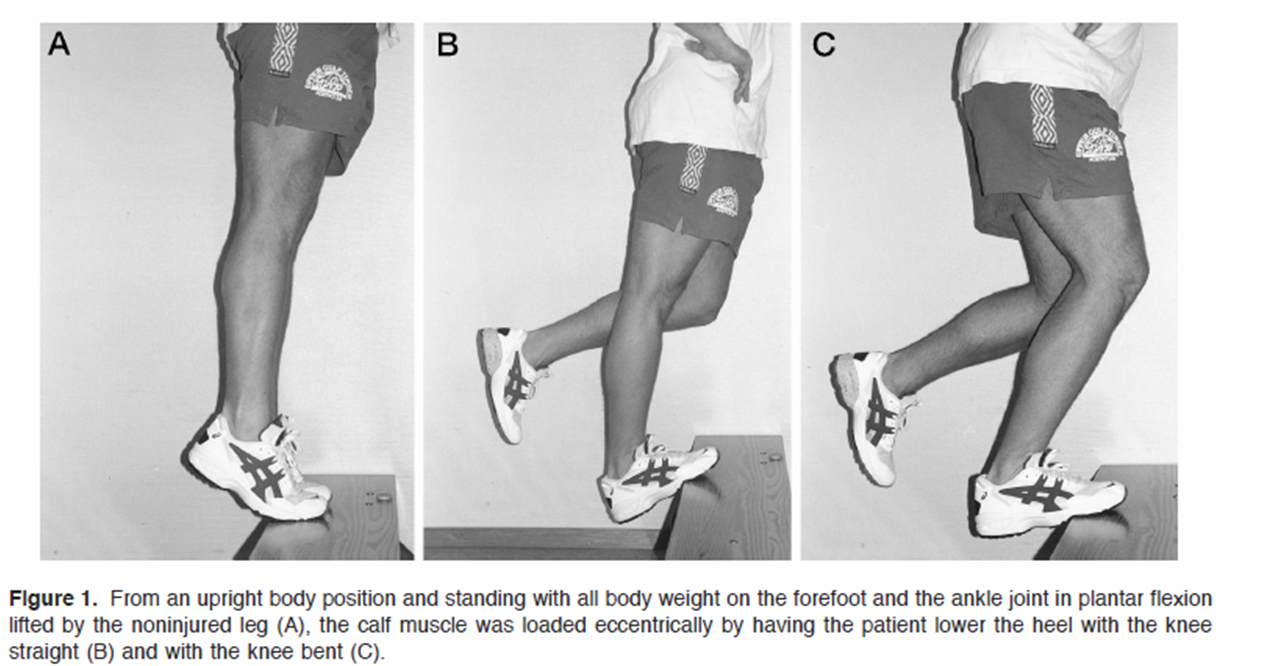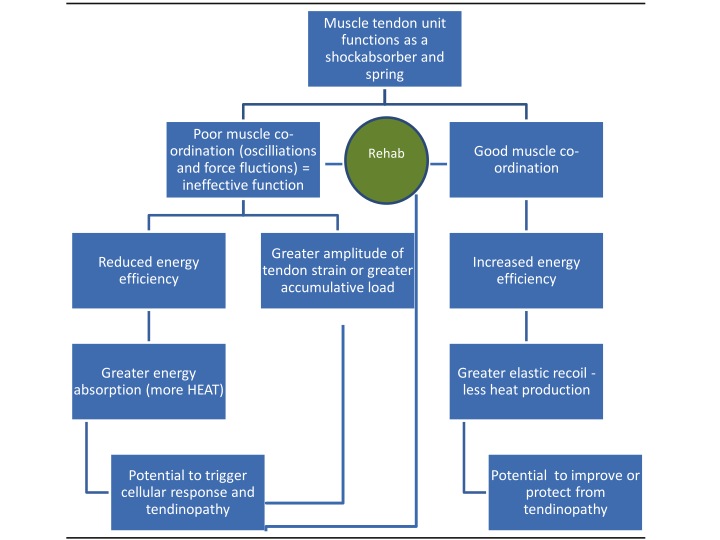One of things I enjoy about the profession of Physical Therapy is its’ constantly changing nature of the medical evidence behind what we do. Often I come across a new article or research report, which challenges my previous line of thought about an injury or treatment and requires me to change. Achilles Tendinopathy is commonly and effectively treated with eccentric (lengthening) exercise in our practice. My previous explanation on the benefits of this exercise was the positive structural effects noted in the tendon following this exercise prescription (see hyperlink above). It now appears the structural change explanation does not completely explain the beneficial effects of this intervention.
Previously it was thought that the higher loads experienced during eccentric contractions in the Achilles tendon promoted structural adaptations, which remodeled (healed) the tendinopathy (Stanish et al. Clin Orthop. 1986). These adaptations take time, often years, to complete yet our patients demonstrated decreased pain and improved function in less than 12 weeks. The discrepancy between time to remodel and clinical improvement requires us to consider a different mechanism of action.
Recently, O’Neill and colleagues wrote an excellent clinical commentary in the International Journal of Sports Physical Therapy exploring other mechanisms behind the positive effects of eccentric exercise on this condition. The authors described literature suggesting the neuromuscular output of the gastrocnemius and soleus muscles may explain more of the benefits behind exercise. It is very common to find a loss of dorsiflexion (bending) of the ankle during the Physical Therapy examination in patients with Achilles tendinopathy. Mueller et al. initially suggested patients with weakened plantar flexors of the ankle (heel raise or push off) use a smaller range of ankle dorsiflexion (bending) to optimize push off during walking (Phys Ther. 1995). Thus treatments to restore ankle dorsiflexion will be more effective if we can restore the motor properties of the ankle plantarflexors.
Achilles Tendinopathy is a very painful condition and the tendon itself often has a lower threshold for producing a pain response through walking, stretch, or touch. Authors note this may be due to an increase in nerve and blood vessel (neurovascular) growth into the tendon during the tendinopathy (Ohberg et al. Knee Surg Sports Traumatol Arthrosc. 2004). Eccentric exercise may promote beneficial structural changes within these nerves and vessels through loading, but the contribution of neurovascular changes on a patient’s pain or prognosis is not known.
Authors previously reported a loss of plantarflexion strength and power is an independent risk factor for Achilles tendinopathy (Mahieu et al. Am J Sp Med. 2006). It is likely that the calf muscle is able to shield the tendon to avoid excessive loading during walking or sports. Improved strength and coordination through eccentric exercise also appears to coordinate and smooth muscle contractions in the calf thereby decreased asymmetrical loading patterns on the tendon.
In short, eccentric exercise remains a staple in the conservative Physical Therapy management of Achilles tendinopathy but the reasons on its’ effectiveness continue to develop. Our current understanding makes passive interventions such as modalities, orthotics, etc. less likely to create the positive effects seen with exercise. It appears the improvement in neuromuscular strength, balance, and coordination help shield the tendon from excessive loads. In addition, these mechanismTo learn about the beneficial effects of eccentric exercise on tendon injuries contact the experts at Mend.


